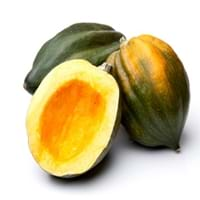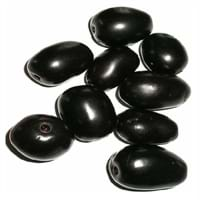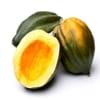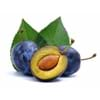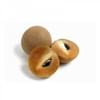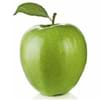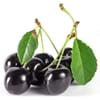Health Benefits
Anti-inflammatory properties, Arthritis treatment, Regulates Blood Sugar
Cancer prevention, Heart care, Increase in haemoglobin, Regulates Blood Sugar, Ulcer prevention
General Benefits
Boosts immune system, Controls blood sugar levels, Digestive aid
Boosts immune system, Digestive aid, Fights against infections, Strengthens bones
Skin Benefits
Nourishes skin, Protects skin from oxidative stress
Brightens and lightens complexion, Skin cleansing, Skin rejuvenation, Treatment of acne, Treatment of dark spots
Hair Benefits
Prevents hair loss, Promotes longer and healthier hair, Regulates hair growth
Promotes longer and healthier hair, Protects hair
Allergy Symptoms
Asthma, Red rash, Swelling of mouth, tongue or lips
Abdominal pains, NA
Side Effects
Diarrhoea, Vomiting
Decrease in blood sugar levels, Allergic reaction, Throat irritation, Throat swelling, Possibly unsafe during pregnancy
Best Time to Eat
Along with meal, As a snack in the late afternoon, Don't eat after meal, Eat the fresh ones, avoid mixing with any other foods, don't eat after meal.
As a snack in the late afternoon, Don't consume at night and before bed, Eat the fresh ones, avoid mixing with any other foods, don't eat after meal., Morning time (before lunch), Strictly avoid empty stomach
Vitamin B5 (Pantothenic Acid)
Not Available
Vitamin B9 (Folic acid)
Not Available
Vitamin C (Ascorbic Acid)
Phytosterol
Not Available
Calories in Fresh Fruit with Peel
Calories in Fresh Fruit without Peel
Not Available
Not Available
Calories in Frozen Form
Not Available
Calories in Dried Form
Not Available
Calories in Canned Form
Not Available
Type
Berry
Tree fruit, Tropical
Season
Winter
Monsoon, Summer
Varieties
Bush Table Queen, Heirloom Table Queen, Festival Hybrid, Early Acorn Hybrid, Table Ace, Ebony and Cream of the Crop
Ram Jarnun and Paras
Color
Dark green, Green-yellow, Orange green
Black, Magenta, Purple
Inside Color
Yellow
Purple
Taste
Sweetish
Astringent, Sweet
Origin
Central America, North America, Unknown
Bangladesh, India, Indonesia, Malaysia, Nepal, Pakistan, Philippines, Sri Lanka
Soil Type
Well-drained
Loam, Sandy loam, Well-drained
Climatic Conditions
Cold, Sunny
Humid, Rainfall
Facts about
- It was named as Acorn Squash for its resemblance to a large ribbed acorn.
- It is said that squash was being grown in Mexico as long as 10,000 years ago.
- It was the first food cultivated by native American Indians.
- Wood of jambul tree is water-resistant wood & is used in railroads and to implement engines in the well.
- In Indian mythology, it is said that Jambul fruit was revered by Buddha.
- Jambul has a huge importance in Ayurveda.
Other Countries
Egypt, India, Iran, Italy, Mexico, Russia, Turkey, Ukraine, United States of America
Bangladesh, Indonesia, Malaysia, Nepal, Pakistan, Philippines, Sri Lanka
Top Importer
Costa Rica
Not Available
Top Exporter
United States of America
India
Botanical Name
Cucurbita Pepo
Syzygium cumini
Synonym
Winter Squash
Eugenia cumini
Subkingdom
Tracheobionta
Tracheobionta
Division
Magnoliophyta
Magnoliophyta
Class
Magnoliopsida
Magnoliopsida
Subclass
Dillenhidae
Rosidae
Order
Cucurbitales
Myrtales
Family
Cucurbitaceae
Myrtaceae
Generic Group
Not Available
Not Available
Difference Between Acorn squash and Jambul
We might think that Acorn squash and Jambul are similar with respect to nutritional value and health benefits. But the nutrient content of both fruits is different. Acorn squash and Jambul Facts such as their taste, shape, color, and size are also distinct. The difference between Acorn squash and Jambul is explained here.
The amount of calories in 100 gm of fresh Acorn squash and Jambul with peel is 40.00 kcal and 60.00 kcal and the amount of calories without peel is Not Available and Not Available respectively. Thus, Acorn squash and Jambul belong to Low Calorie Fruits and Low Calorie Fruits category.These fruits might or might not differ with respect to their scientific classification. The order of Acorn squash and Jambul is Cucurbitales and Myrtales respectively. Acorn squash belongs to Cucurbitaceae family and Jambul belongs to Myrtaceae family. Acorn squash belongs to Cucurbita genus of Pepo species and Jambul belongs to Syzygium genus of S. cumini species. Beings plants, both fruits belong to Plantae Kingdom.
